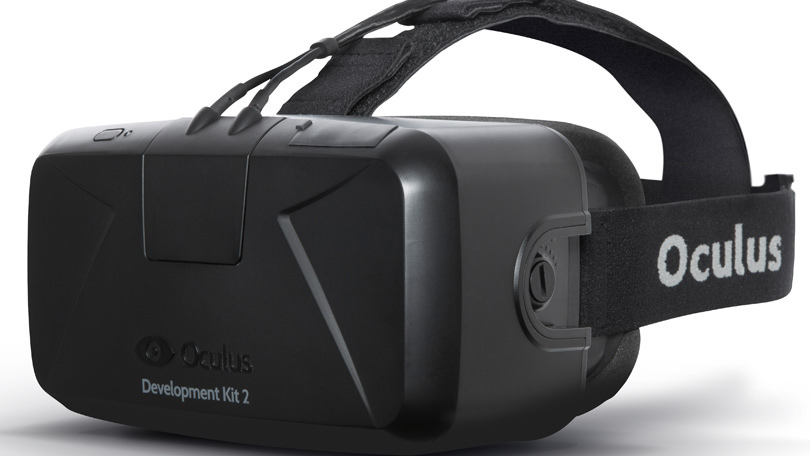Earlier in the year, virtual reality trailblazers Oculus announced the pricing for the Oculus Rift, one of the first fully-integrated VR systems to grace the consumer market. The heftily-priced $599 kit nets you a headset, a neat remote control, and an Xbox One controller. The first wave of Rift shipments will begin making their way to preorderers and forward-thinking Kickstarter backers in less than a week.
Last month, HTC and Valve announced the details for their own VR kit, the $799 Vive, set to ship in early April. Befitting its outsized price tag, the Vive offers a more personalized virtual reality experience, including a set of sensor towers to map the dimensions of your living room to the virtual world.
Oh, and in case you missed it, last week Sony announced Playstation VR, a more consumer-grade headset compatible with the Playstation 4 and priced at a paltry $399.
In the span of a few short years, VR has gone from an untenable future technology, like flying cars or the Holodeck, to a field flooded with competition. Each model offers its own unique pros and cons. Here, then, is the issue: what virtual reality is the right one for you?
The simple truth is that the layman – the average consumer that hasn’t spent the last few years playing around with Oculus devkits and browsing industry forums – knows next to nothing about the raw technical differences between, say, Google Cardboard and Samsung’s Gear VR. The idea that a typical consumer would so readily drop several hundred dollars on something they know so little about is more than a little absurd, and is VR’s biggest problem going forward towards mainstream use.
It is exceedingly hard to convincingly show off virtual reality technology without simply strapping a headset onto every prospective buyer. Shopping for VR headsets becomes something like shopping for a new car, walking around, kicking the tires. It’s such a foreign, otherworldly concept to many that only a firsthand demonstration can really showcase just how far the technology has come, but it’s not like Best Buy can set up a Rift and a Vive and Playstation VR in-store to show every passerby. Pinkeye shouldn’t have to be a side effect of VR.
For virtual reality to really take off, it’s going to take some time. The average consumer needs to be more informed and more comfortable with making a decision on which brand to invest in, which only time and experience could provide. It also bears mentioning that outside of hobbyists and the über-rich, no one is quite ready to spend $600 on a new, decidedly undefinable technology.
The advent of VR looks to be drawn along similar party lines as the console wars of old. One can only imagine the rampant fanboyism and brand loyalty that looms uncertainly in the future: Rift vs. Vive could soon become as hotly-contested as Sega vs. Nintendo, or Sony vs. Microsoft. And I shudder to think of what the threat of franchise exclusivity between VR systems could do to such a fragile, fertile digital ecosystem.
What games can we expect to play within the first week, the first month, the first year of the Rift? Can I mix and match my VR sets; plug in an Oculus headset and use the Vive’s tracking towers to map my room to it? Is there such a thing as a Vive-exclusive title? What can a $700 piece of hardware offer besides a new way to play video games? At this juncture, there are still unsettlingly many questions about the future of VR that continue to go unanswered.
The issue with keeping the public informed about VR is its inherently secretive status. The behind-closed-doors nature of VR development is self-explanatory: companies are venturing into uncharted territory with virtual reality. Such a lofty investment into unproven tech needs to be perfect the first time around, else it fades into gimmicky obscurity. It’s easy to believe the stories that Playstation VR – first announced cryptically as Project Morpheus – has been in some form of development or another for years on end. And while Oculus has been fairly transparent along its four-year development cycle, its acquisition by Facebook in 2014 brought it up from its startup roots as one of Kickstarter’s first great success stories to a major Silicon Valley tech enterprise. Expecting a regular, helpful information flow at this point is a dubious prospect, but it’s a necessity in the first days of a blooming new industry.






















